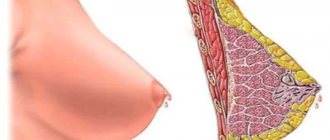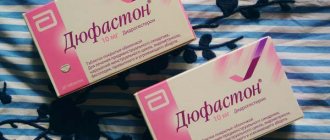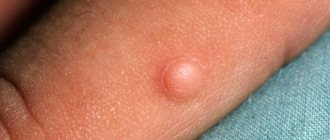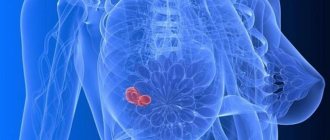Lymphostasis of the hand is characterized by a violation of the flow of lymph and the development of edema in the affected area. If you do not treat arm lymphostasis, the pathological process will progress, and fibrosis and the formation of trophic ulcers will develop over time. The area of tissue where lymphostasis has occurred is more susceptible to various mechanical damage and the development of the inflammatory process, so the disease requires immediate treatment. Quite often, lymphostasis occurs after surgical treatment of breast cancer. This is due to the characteristics of the operation being performed.
For qualitative elimination of lymphostasis in Moscow, you can contact the Yusupov Hospital. The best doctors in Moscow work here, who have extensive experience in treating lymphostasis after mastectomy and in the rehabilitation of patients after cancer treatment.
What is lymphostasis?
Surgery to remove the mammary gland is performed only in extreme cases, when doctors are sure that other treatment methods will not give the desired effect. The most common complication after surgery is swelling of the upper limb, which develops due to lymphostasis.
If after surgery there is a violation of the outflow of lymphatic fluid, then they say that lymphostasis of the arm has developed after removal of the mammary gland. In this case, the affected organ becomes enlarged. If this problem is not eliminated, then the process spreads to neighboring tissues, where microcirculation of blood and lymph is disrupted. From this condition it is very close to fibrosis and trophic ulcers.
If you add erysipelas to this, then sepsis is just around the corner. When large lymph nodes are removed as a result of surgery, the drainage function is disrupted, which leads to swelling of the arm.
Treatment
The doctor prescribes a course of therapy only after identifying the causes of the disease. For infectious etiology and erysipelas, treatment is carried out with antibiotics. The complex includes diuretics, vitamins, immunostimulants, antihistamines, and manual lymphatic drainage. Self-massage of the hand for lymphostasis is prescribed if the doctor considers it appropriate, and the swelling is not accompanied by rashes and ulcerations of the skin. For severe pain, analgesics are added to the course of therapy.
If the cause of secondary lymphostasis is the formation of metastases, treatment is only necessary with surgery followed by chemotherapy/radiation therapy.
It must be remembered that secondary lymphostasis is very difficult to treat, and the prognosis is not always favorable. Simple preventive measures, including a balanced diet, a gentle daily routine, and the absence of intense stress on the problematic arm, can increase your chances.
Reasons for the development of the disease
With lymphostasis, persistent swelling is observed, which occurs due to impaired outflow of tissue fluid. If you have been diagnosed with lymphostasis of the arm, the reasons may be the following:
- Operations involving the removal of lymph nodes, which include mastectomy.
- Erysipelas.
- Chronic problems with the lymphatic and venous system.
Regardless of the cause, this disease requires immediate treatment to prevent serious complications from developing. There are cases when lymph nodes and muscle tissue are completely removed, but lymphostasis does not develop, and in some cases a severe complication begins even with the slightest intervention.
Diagnostics
2.1 Complaints and anamnesis
Collection of complaints and medical history to verify the diagnosis.
2.2 Physical examination
Inspect both VCs, pay attention to the condition:
swelling of the VC:
- local or widespread,
- distal, proximal or general,
- swelling-related deformities,
skin VK:
- color,
- hyperkeratosis,
- lymphatic fistulas.
Palpation of both VCs to determine:
- characteristics of edema (soft or hard, pitting test);
- Stemmer's symptom;
- condition of regional lymph nodes,
- pulsations;
- venous filling;
- signs of phlebitis;
- skin sensitivity disorders.
Measuring the volume of the limbs to determine the stage of PMOC, assessing the effectiveness of treatment:
- volumetry - the volume of displaced water when a limb is immersed in a graduated container;
- anthropometry – circumference of the hand, forearm (lower, middle, upper third), shoulder (lower, middle, upper third); limb volume: volume of a truncated cone V=⅓πH(R1²+ R1R2+ R2²) ; (circumference L=πD=2πr; R=L/2π)
2.3 Laboratory diagnostics
Not required.
2.4 Instrumental diagnostics
D complex scanning of the subclavian, axillary and VC veins:
- to assess venous outflow;
- identification of the localization and degree of stenosis of the main veins with subsequent phlebomanometry .
Ultrasound scanning of the soft tissues of the VC to assess fibrous changes in the subcutaneous fat:
- expressiveness,
- the nature of the prevalence of edema,
- thickness of subcutaneous tissue,
- fibrosis,
- expansion of interstitial spaces.
Indirect upper lymphoscintigraphy (LSG) for patients with grade 1-2 lymphedema:
- “gold standard” for assessing the functional state of the lymphatic bed;
- whole body scan mode (scanning the whole body) in dynamics;
- degree of insufficiency of lymph transport - complete block or partial disruption of outflow in the axillary region;
- The pathognomonic sign of PMOC is retrograde lymph flow.
Benefits of LSG:
1. early diagnosis of PMOC, 2. prediction of the development and progression of PMOC taking into account the degree of block of lymphatic drainage, 3. has no contraindications, 4. can be performed repeatedly.
Disadvantages of LSG:
1. low anatomical visualization of lymph vessels with low radioactivity of technetium, 2. does not allow assessing the quantitative state of lymph vessels.
Color intraoperative lymphography (CL) for visualization of lymphatic vessels during reconstructive operations.
Indirect MR lymphography in 1.5 or 3.0 Tesla mode with contrast:
- determination of treatment tactics for PMOC;
- low invasiveness;
- does not lead to radiation exposure, therefore it is used to evaluate treatment results.
Fluorescent lymphography with indocyanine green for mapping lymph vessels and nodes during the surgical treatment of PMOC:
- linear type of distribution - a normally functioning lymphatic system;
- focal type - slight retrograde lymph flow;
- “stardust” type - significant disruption of lymph passage;
- diffuse type - total stagnation of indocyanine green.
2.5 Other diagnostics
Consultations with specialized specialists for the diagnosis of concomitant diseases:
- diabetes,
- erysipelas,
- vein thrombosis, etc.
Types of lymphostasis
Doctors distinguish several stages in the development of lymphostasis:
- Early swelling.
- Late.
The first type usually develops immediately after breast removal, as damage to the lymph nodes occurs and lymph leaks out. This swelling is also called soft.
Late lymphostasis of the arm after removal of the mammary gland can develop quite a long time after the operation. Most often, such complications affect women who were exposed to radiation before or after surgery. They can also be triggered by scarring processes, which prevents the restoration of normal lymphatic drainage.
You should not take measures to eliminate this problem on your own; you should consult a doctor, because late swelling can often signal a recurrence of cancer. If this is not confirmed, then treatment of arm lymphostasis after mastectomy can begin.
Lymphedema after breast cancer surgery
The lymphatic system helps coordinate the function of the immune system to protect the body from foreign substances and consists of an extensive network of vessels and lymph nodes. How does the lymphatic system work:
- Excess fluid that collects between the tissues of the body passes through the lymph vessels. Fluid (called lymph) enters the body through the lymph system as the lymphatic vessels are compressed by surrounding muscles.
- Filters called lymph nodes remove certain harmful substances from the liquid, for example: bacteria and organic matter residues. Fluid from most tissues and organs passes through one or more lymph nodes before entering the bloodstream.
What is lymphedema?
Lymphedema is an abnormal accumulation of fluid that causes swelling of the arms and legs. This occurs when lymphatic vessels and nodes are damaged or absent.
There are two types of lymphedema: primary and secondary.
Primary lymphedema is rare and is caused by the absence or damage of a particular lymphatic vessel at birth.
Secondary lymphedema occurs as a result of a blocked or ruptured vessel that alters the flow of lymph through the lymphatic system. The cause may be infection, cancer, surgery, scar tissue, trauma, deep vein thrombosis (blood clots in the veins), radiation therapy, or other cancer treatments.
Who is at risk for developing lymphedema?
Any of the following procedures increases the chance of developing lymphedema:
- Simple mastectomy combined with axillary lymph node removal.
- Lumpectomy combined with axillary lymph node removal.
- Modified radical mastectomy in combination with axillary lymph node removal.
- Combined cancer surgery and radiation therapy in the lymph node area.
- Radiation therapy in the area of the lymph node.
Lymphedema can form within days, months, or even years after surgery. Some swelling is normal during the first four to six weeks after surgery.
What happens after surgery?
Lymphedema develops after surgery due to alteration of the channel through which fluid passes. This can happen any time after surgery. If you ignore this fact, the consequences can be dire.
After surgery, your doctor will perform a physical examination to check for changes. Sometimes, redness or pain in the arm can be a sign of inflammation. Depending on the symptoms, the doctor will suggest the optimal treatment.
Signs and symptoms of lymphedema?
If you notice any of the following symptoms, contact your doctor immediately. Quick treatment will help control the process.
- Swelling of the arms, fingers, shoulders, chest or legs. Swelling can form after injury (such as bruises, cuts, sunburn, and sports wounds), infections, and flying (due to changes in pressure).
- Feeling of heaviness in the arms or legs.
- Change in skin density.
- Decreased flexibility in your hands, wrists, or ankles.
- Clothing that fits tightly in a specific location.
- A tightly fitting bracelet, watch or ring that was previously the right size.
How to diagnose lymphedema?
Lymphedema can be diagnosed after a thorough review of your entire medical history, including previous surgeries and treatments, an assessment of current medications and symptoms, and a complete physical examination. Sometimes, additional tests may be necessary.
How to treat lymphedema?
Treatment for lymphedema varies depending on the stage and cause of the disease. The most important aspect of treatment is learning to take care of your health.
If swelling symptoms are caused by an infection, antibiotics may be prescribed. Alternative treatment may consist of dressings, special skin care and diet, exercise, and manual lymphatic drainage.
How can you prevent lymphedema?
To prevent lymphedema, follow these guidelines.
Eat right
- Limit your consumption of salty and fatty foods.
- Eat at least two to four servings of fruits and three to five servings of vegetables per day.
- Eat a variety of foods to get all the nutrients you need.
- Read food labels to learn how to make healthier food choices.
- Eat high fiber foods such as whole grain breads, cereals, pasta, rice, fresh fruits and vegetables.
- Drink plenty of water—eight glasses a day.
- Maintain your ideal body weight. (A nutritionist can help you determine your ideal body weight.)
- Avoid drinking alcoholic beverages.
Do regular physical activity
- Always discuss any exercise program with your doctor.
- To improve the functional state of the cardiovascular system, aerobic exercise (walking, swimming, low-intensity aerobics and special exercises) for 20 to 30 minutes is recommended, at least three times a week.
- Do a five-minute warm-up, including stretching before class and 10 minutes of exercise after.
- If you like strength training, talk to your doctor about the optimal weight for you.
- Stop any exercise that causes unexpected pain. If your limbs (those that have had surgery) get tired during exercise, take a break.
Beware of infections
- Wear gloves when doing housework.
- Try not to cut your cuticles when doing a manicure. Trim your toenails carefully.
- Wash your hands often with soap.
- Protect your skin from abrasions, wounds, burns and other irritations that can lead to infection. Use electric razors and change the blade often.
- Use insect repellent to prevent flea and bedbug bites.
Next »
Diagnosis of the disease
Typically, after the operation, the woman will remain in the hospital for about three weeks under the supervision of doctors, so during the examination, the doctor can detect problems with the lymphatic system in time.
If swelling begins to develop at later stages, then you will also need to consult a gynecologist, who will definitely ask:
- What operation was performed and how many there were.
- Were there any complications in the early stages after breast removal?
- The time when lymphostasis of the arm appeared after removal of the mammary gland.
- How does the disease progress?
- What medications have you already taken?
- The presence of other chronic diseases, such as hypertension, diabetes, heart disease.
Since it is not the gynecologist who should treat lymphostasis, he will recommend that you consult a specialist for an adequate solution to this problem.
Diagnostic methods
The diagnosis and treatment of lymphostasis is carried out by a vascular surgeon or lymphologist. To identify pathology, chest x-ray, x-ray lymphography, and lymphostintigraphy are used. These methods allow you to observe changes in the lymphatic system, identify neoplasms or places of blockage of blood vessels in it.
Lymphostasis of the hand: symptoms
If the disease is mild, you may notice the appearance of swelling of the arm, which usually increases during the day and goes away after a night's rest. Physical activity or, conversely, a long immobile position can lead to an increase in edema.
At this stage, there are completely no irreversible changes in the connective tissue, therefore, if you contact a lymphologist in time, the prescribed treatment will allow you to get rid of this problem.
The average degree of the disease is characterized by swelling that does not disappear after rest. In this case, connective tissue grows, the skin becomes stretched and thickened, and pain may be felt. With persistent lymphostasis, increased fatigue and cramps are observed.
If lymphostasis reaches the last stage, which is considered severe, irreversible changes in the lymphatic system are already observed. Fibrocystic formations and elephantiasis can be observed. These changes cause the contours of the hand to change and its functioning to be disrupted.
The worst thing is a serious complication of this period - sepsis, which can lead to death.
Stages of development and symptoms of the disease
The development of lymphostasis can be divided into three stages. Symptoms directly depend on the stage of the disease.
- Stage 1 (mild). Swelling is temporary. Often the hand swells in the evening, and in the morning everything returns to normal. The appearance of swelling is influenced by fatigue of the limbs, physical activity, prolonged work with hands, or, conversely, a sedentary lifestyle. At this stage, irreversible changes in tissues are not yet observed, so the disease can be successfully treated, which will lead the disease to stable regression. Another thing is that in the initial stages of lymphostasis, few patients pay attention to short-term painless swelling. Therefore, they begin to turn to specialists only with the development of the second stage of the disease.
- Stage 2 (middle). Edema becomes permanent. Connective tissue begins to grow. The skin on the hand hardens, stretches and becomes rough. Painful sensations appear. If you press your finger on the site of swelling, a mark will remain for some time. It is impossible to gather the skin into a fold. As a result of these symptoms, the hand begins to get tired faster, and sometimes cramps occur.
- Stage 3 (severe). Disturbances in lymphatic drainage become irreversible. Symptoms of the second stage intensify. The hand increases in size and loses its contours. Hyperplasia and elephantiasis develop. The limb loses its mobility. Next, wounds and cysts are observed, sometimes eczema, ulcers and erysipelas.
Treatment of lymphostasis
Therapy for this disease includes two stages:
- Ambulatory treatment. Prescribed by a lymphologist. At this stage, treatment of arm lymphostasis after mastectomy comes down to the following procedures:
- Wearing special compression stockings.
- Hand massage.
- Magnetic therapy.
- Drug treatment.
- Laser therapy.
- Maintaining a certain diet.
- Physiotherapy.
2. Surgical treatment if lymphostasis of the arm due to breast cancer could not be overcome by conservative methods. Surgery is also indicated in cases where the disease progresses rapidly.
Treatment after mastectomy
The effectiveness of all therapeutic methods depends on the complexity of the situation. Signs of arm lymphostasis that appear after removal of the mammary gland are an alarming bell for emergency treatment. Because at this stage it can be cured quite quickly, but as it progresses it will be more difficult to get rid of it. When limb deformity begins, no treatment methods can help completely eliminate the problem.
Medicines
Swelling of the arm after surgery on the mammary glands is treated with drug therapy. The list of medications, dosage and course duration are individually determined for each patient by the attending physician. The average duration of treatment is one month. Common to all patients is the use of diuretics. But they are used for short-term therapy. When the patient has an increase in body temperature and a febrile state, antibiotics are used.
We recommend additional reading: How to treat inflammation of the lymph nodes with medications and folk remedies
After breast surgery, swelling due to lymphostasis can be relieved using the following medications:
- diuretics (furosemide, lasix);
- anti-inflammatory (diclofenac, ibuprofen, naproxen);
- antiplatelet agents (trental);
- multivitamin complexes.
Along with drug therapy, you need to maintain a balanced diet. Achieving stable improvement is possible only with the use of comprehensive measures.
Compression
For lymphostasis of the arm, compression treatment is used simultaneously with other therapeutic methods. Patients are prescribed to wear compression garments. It evenly distributes the load on the limb and prevents swelling. Another treatment option can be used in the form of a tight bandage of the swollen arm.
Compression therapy activates lymph flow.
But you shouldn’t over-tighten your hand, because of the high risk of circulatory problems and worsening the problem. Pathology is treated with elastic bandages.
Diet
Patients who have the problem of lymphostasis should reconsider their diet. The key to a speedy recovery, normalization of the condition and restoration of motor function of the hand lies in proper nutrition. Therefore, dietary nutrition should be part of the treatment. The diet for lymphostasis of the arm after mastectomy includes only low-calorie foods.
The main provoking factor for the accumulation of fluid in the body is salt. Therefore, it must be abandoned. Even a small amount of salt causes swelling.
You don't have to completely avoid starchy foods, but they should be present in small quantities in your diet.
Spices, alcoholic and carbonated drinks are completely excluded.
After the condition improves, you cannot switch to normal nutrition. You need to adhere to dietary nutrition until complete recovery. But even after recovery there are restrictions on some products. Salt, spices and other harmful foods should be in small quantities. In order for foods to be better absorbed, it is better to boil or steam them. Compliance with dietary nutrition will help prevent a new round of lymphostasis.
Massage
In the complex treatment of lymphostasis, hand massage is used. This procedure is quite simple and consists of ordinary rubbing and kneading of the limb. When a limb swells, the first thing you need to do is work on your arm. Each patient can do this herself. All manipulations are quite simple, but they should be soft and performed without effort. It should be done slowly and completely cover the entire arm. During the procedure, the arm must be raised in order to ensure the outflow of fluid from the hands.
We recommend further reading: Massage and drug treatment of lymphostasis of the upper extremities
Each area of the upper limb is carefully worked out. When the procedure is performed correctly, there is no discomfort or pain. But the exact number of repetitions is determined by a specialist, based on the patient’s condition.
Treatment of arm lymphostasis after mastectomy is not limited to massage, because only comprehensive measures can ensure recovery.
Traditional methods
Traditional medicine is used against lymphostasis. But before you self-medicate at home, you need to consult a doctor. He will determine which folk remedies are suitable for a particular patient, and whether he has any contraindications for their use.
Plantain infusion helps to eliminate swelling. Before drinking the decoction you need to eat a little honey. You need to drink the decoction on an empty stomach about half an hour before meals. Treatment should not exceed two months.
Decoctions of various herbs have a powerful diuretic effect.
Their use will fill the body with the necessary nutrients and normalize the outflow of lymph. Exercising after a mastectomy will complement home therapy and make it more effective. They will relieve swelling and alleviate the condition of patients. Regular gymnastics for hand lymphostasis gives good results.
Drug therapy
If lymphostasis of the arm develops, only a doctor should prescribe treatment. Along with all physiotherapeutic methods, drug therapy is used, which prescribes:
- Angioprotectors.
- Phlebotics.
- Immunostimulants.
- Enzymes.
- Antibiotics if erysipelas occurs.
All of these groups of drugs, together with procedures, make it possible to restore normal lymph flow and strengthen the walls of blood vessels.
Rehabilitation
Carrying out rehabilitation measures to improve:
- physical condition of the affected limb,
- quality of life of patients.
PMOC is a chronic incurable disease that requires:
- permanent and lifelong compression therapy,
- psychosocial rehabilitation.
Cupping of PMOK:
- restoration of functional activity and adaptation to normal physical activity,
- social adaptation with leading a socially useful life,
- psychological adaptation even with severe limb deformation.
Therapeutic exercise for lymphostasis
Not only a massage for arm lymphostasis will be effective, but also a set of physical exercises that your doctor will recommend to you. All complexes are aimed at improving lymph flow. You can start classes from 7-10 days after surgery.
After breast removal, a woman feels some stiffness in her arm and shoulder girdle, which causes her to begin to slouch and press her arm closer to her body. This leads to additional problems in the form of headaches and cramps that disrupt the movement of lymphatic fluid.
Massage and physical therapy will help to avoid such consequences or get rid of them, if they already exist. The effect will depend on the time when classes begin - the earlier, the better.
You can perform the suggested exercises while sitting on the bed with your shoulders straightened. Repeat each exercise from 4 to 10 times. Do not push yourself to the point of exhaustion; if you experience discomfort or pain, you need to rest.
- Straighten your arms and place them on your knees, palms down. It is necessary to turn the hands over, just without straining.
- The position is the same, alternately clench your fingers into a fist and unclench them.
- Your arms should be bent at the elbows, with your palms resting on your shoulders. Slowly raise and lower your arms.
- Bend in the direction where the operation was performed, lower your hand and make small movements back and forth with it.
- You need to raise your hand on the operated side up and hold it in this position for several seconds.
- Inhale - raise your hand in front of you, hold your breath and move your hand to the side. Exhale – lower your hand.
- Make circular movements in the shoulder joint.
- Place your fingers behind your back and straighten your arms. Try to raise your arms in this position.
- Join your hands behind your back in a “lock” and press them with the backs of your hands to your lower back.
Perform all exercises slowly, take your time. In this case, it is not the speed of execution that is important, but the regularity.
Organization of medical care
Indications for planned hospitalization:
1. Stage III PMOC; 2. planned surgery
Indications for emergency hospitalization:
1. erysipelas of the erythematous-bullous, erythematous-hemorrhagic, bullous-hemorrhagic form.
Indications for patient discharge from hospital:
1. reduction in the volume of the VC on the affected side by 25%.
Target audience of these clinical recommendations:
1. surgery 2. cardiovascular surgery 3. therapy 4. cardiology 5. general medical practice (family medicine) 6. physical therapy and sports medicine 7. physiotherapy 8. radiology 9. radiology 10. oncology
Healing massage
The attending physician will definitely recommend that you not only do physical therapy, but also massage your arm on the operated side. You can do the massage yourself, or you can ask your loved ones to do it for you.
Before a woman is discharged from the hospital, the doctor will definitely talk with her about her daily routine, the sets of exercises that need to be done, and will also show and talk about massage techniques.
Here are some recommendations for performing this procedure for lymphostasis:
- It is necessary to raise the swollen hand up and rest against a vertical surface, while the other one makes stroking movements from the fingers to the shoulder and from the elbow to the shoulder. You can use special ointments or creams.
- Massage movements must be done from all sides. They should be soft, calm and leisurely. During this procedure you should not feel pain or discomfort.
- The duration of one massage session is several minutes. Depending on the stage of the disease, it can be performed several times a day.
Primary lymphostasis of the arm after breast removal: treatment
When a patient is discharged from the hospital, the specialist must warn her about possible complications and tell her what she should do in this case. For his part, the attending physician in some cases may prescribe:
- course of venotonics (no more than 4 weeks);
- a course of diuretics (as diuretics, you can use folk remedies based on decoctions of nettle, horsetail, fennel, parsley, burdock root, sophora fruit, plantain leaves and others);
- physiotherapy.
Venotonics are prescribed only in the absence of metastasis.
Physiotherapeutic procedures using laser, UHF and heating are unacceptable. Magnetic therapy is also contraindicated. You can only use vacuum massage of the affected area, but this procedure must also be prescribed by a doctor.
Traditional healers against lymphostasis
There is no need to panic if you have been diagnosed with lymphedema of the arm after a mastectomy. Treatment with folk remedies in combination with other methods of therapy will give good results.
First of all, traditional medicine advises taking diuretic infusions and decoctions that will not contribute to fluid retention in the body. Taking diuretic tea has a good effect, here is the recipe for its preparation:
- Collect, dry and chop blackcurrant leaves.
- Combine them with the same amount of rose hips.
- Brew 1 teaspoon of the mixture with 200 ml of boiling water.
- Take 100 ml before meals 4 times a day after the tea has steeped.
If you ask traditional healers about how to treat lymphostasis of the hand, they will give you a lot of recipes. Here are some of them:
- Compress made from cottage cheese and potatoes. The cottage cheese should be dry, the potatoes grated and without juice. You can apply them together on your sore hand or take turns: cottage cheese today, potatoes tomorrow.
- Along with potato and cottage cheese compresses, you should take a tincture of Sophora fruits. It helps strengthen connective tissue and relieves inflammation. To prepare it, you need to take 50 grams of fruit, pour 0.5 liters of vodka over it and leave for three weeks, stirring occasionally. Take 30 drops 3 times a day on an empty stomach.
- You can prepare a collection from equal parts of sweet clover, meadowsweet, black elderberry, willow bark and dandelion root. Take 1.5 tbsp. l. pour 0.5 liters of water into the mixture and boil for several minutes. Leave to infuse. Take 100 ml three times a day before meals.
- You can use a compress that relieves swelling: make a dough from rye flour, add the same amount of kefir, preferably homemade. Mix everything well and soak a piece of gauze. Apply a compress to your hand and secure it, leave until dry. You can repeat it several times a day.
- Lymphostasis of the hand can also be treated with natural beet juice, which should be drunk 250 ml per day.
If you combine folk recipes with physiotherapy and drug treatment, you will be able to get rid of lymphostasis.
Symptoms
As a rule, swelling of the arm after breast surgery is accompanied by specific symptoms:
· an increase in the diameter of the upper limb due to fluid retention, which does not go away, but only increases;
· painful sensations in the area of edema formation;
· compaction of subcutaneous tissue;
· roughening of the skin;
· violation of active and passive movements of the limb;
Gradual deformation of the fingers;
· the appearance of rough skin, which is associated with thickening of the stratum corneum of the epidermis;
· formation of ulcers and cracks in the epithelium.
If such symptoms appear, you should not postpone visiting a specialist; this can lead to life-threatening consequences for the woman.
Diet for lymphostasis
We should always monitor our weight, since extra pounds do not add to our health, and even more so if we have problems with the lymphatic system. Nutrition for arm lymphostasis should be rational and within reasonable limits; after all, we eat to live, and do not live to eat.
Any food can become a medicine; ancient philosophers spoke about this. The following dietary recommendations can be given during lymphostasis:
- Reduce the amount of foods containing animal fats.
- Remove smoked meats and sausages from your diet.
- Increase your consumption of fresh vegetables and fruits.
- Do not give up whole grains in the form of cereals.
- The diet should include fermented milk products.
- It is not recommended to eliminate butter completely, but replace most of it with vegetable oil.
- Food should be boiled, stewed, and not fried.
- In addition, you can add a multivitamin.
You need to get up from the table with a slight feeling of hunger. This will not only be good for your health, but will also give you more strength.
Particular attention should be paid to the amount of fluid you drink during the day. It should not exceed 1.5 liters per day. It is advisable to drink this amount before 16-17 hours. It’s better not to drink liquid before bed; if you want, you can indulge in a glass of kefir or fruit.
Daily regimen when sick
After any operation, a person needs recovery, and there is no need to talk about breast removal. This is not only physical trauma, but also great psychological stress for any woman.
First of all, in order to recover faster after surgery, and even more so if you have lymphostasis in the arm after breast removal, a special role is given to your daily routine. To recover, the body needs rest, so sleep at night should be at least 7-8 hours. Don't sit up in front of the TV until midnight; it is advisable to go to bed at 22.00 or 22.30.
To have a sound and healthy sleep, you need to take a warm shower, paying special attention to water massage of sore spots. Many doctors do not recommend taking a bath. You can prepare a second, higher pillow for your sore arm if you have lymphedema in your arm. The photo just demonstrates that this position is more comfortable.
While there are problems with the lymphatic system, it is not recommended to sleep on the sore side, much less put your hand under your head. After waking up in the morning, you need to pay attention to the morning toilet, do a little exercise and take a light breakfast.
If you don't need to rush to work, you can take a walk in the park. At home, you can remove your prosthetic bra to allow your body to rest. During the day, a nap is recommended; it will help you regain your strength faster after surgery.
Many women, almost immediately after returning from the hospital, rush into action and begin to put things in order, wash, and clean. This is strictly prohibited; your household must take this into account, and they will have to take on most of the worries themselves if they want to see their mother and wife healthy.
After a mastectomy, the body will take a long time to restore its lymphatic system. How successfully this happens can be judged by the presence of swelling on the arm. A ring on your finger can be a good indicator: if it puts on as easily as before the operation, then everything is going well.
For those who have a personal plot or their own house with a plot of land, the amount of work there should also be significantly reduced. If this cannot be avoided, then prepare a bench for work. As soon as you feel a little tired, you need to rest.
Don’t forget not only about the area of surgery, but also about your healthy breasts. Try to avoid injuries and jolts, especially in crowded transport.
Complex Decongestive Therapy (CDT)
Treatment of lymphedema in our clinic is carried out in accordance with European standards using the Complex Decongestive Therapy (CDT) method. The treatment is a course of 10 procedures, performed every day or every other day, and consists of SEVERAL stages:
- Manual lymphatic drainage massage is a therapeutic procedure, the technique of which is fundamentally different from classical massage and requires certain professional skills. Therefore, it is carried out by specially trained medical staff of our center. After the massage, a sleeve is put on for pneumocompression.
- Pneumocompression. Hardware lymphatic drainage is carried out in the absence of contraindications - as a rule, between manual massage sessions, and always under the supervision of the attending physician. This procedure helps to increase the tone of the lymphatic channel, activate the passage of intercellular fluid and reduce swelling. Usually prescribed daily or every other day.
- Banding is one of the important components of the complex treatment of lymphedema; it is carried out after sessions of manual and hardware lymphatic drainage. It maintains the effect of the procedures performed, improves lymphatic drainage, and promotes softening of altered tissues. Bandaging prevents swelling from increasing, for which special low-stretch bandages are applied to the arm.
- Compression sleeve. After treatment, it is recommended to wear compression stockings to prevent recurrence of lymphedema. For this purpose, special flat-knit compression sleeves are used, which have high density and wear resistance. This knitwear practically does not stretch and holds its shape well, which prevents swelling from reoccurring. The compression sleeve is selected based on individual measurements and ordered in Germany.
For 20 years, the partner of the Phlebology Center clinic has been the German company medi, which is famous for its pedantic attitude to the quality of its products.
German companies are considered the world leaders in the production of compression knitwear. For 20 years, the partner of the Phlebology Center clinic has been the medi company, which is famous for its pedantic attitude to the quality of its products.
How to prevent the development of lymphostasis
If you were unable to avoid a diagnosis such as arm lymphostasis, treatment will still be needed to prevent more serious complications. But you can take some measures to minimize the risk of such a disease or prevent it altogether:
- You should remove items with tight elastic bands and cuffs from your wardrobe to prevent squeezing lymphatic and blood vessels.
- Use your healthy hand for manual labor, carrying bags, etc.
- It is necessary to measure blood pressure on a healthy arm.
- Try to exercise every day.
- As soon as you notice some changes in your hand, be it redness, swelling, pain, you should immediately consult a doctor.
- In the first year after surgery, you can lift weights of no more than 1 kg with the hand on the side of the removed breast.
- Avoid work that requires you to sit for long periods of time with your torso bent forward and your arms down.
- The hand must be protected from all injuries and damage; even injections cannot be made into it.
- Sleep on your back or healthy side.
If you follow these simple recommendations, you will be able to avoid such complications as arm lymphostasis after surgery.
Development factors
Swelling of the arm after breast surgery is a fairly common phenomenon, but not all women undergoing surgery develop. The following factors usually contribute to this:
· extended surgical interventions with removal of nearby lymph nodes;
· previously suffered erysipelas;
· accumulation of lymph caused by hormonal imbalance in the body (for example, hypothyroidism, when fluid is retained in the body and is poorly excreted);
· chronic pathologies of the circulatory system, in which microcirculation initially suffers (for example, atherosclerosis).
Regardless of the predisposing factor, lymphostasis must be treated without delay, otherwise it will lead to dangerous consequences.











